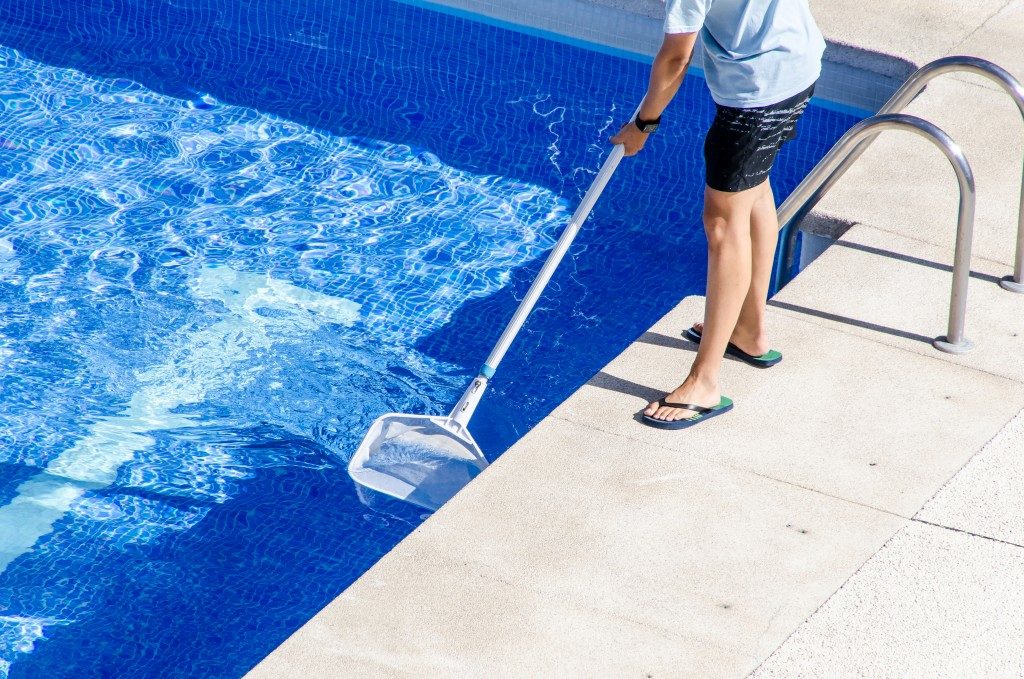Swimming pools create such a relaxing atmosphere in your backyard. It upgrades your home into the ultimate staycation destination, and your guests will always look forward to hanging out at your place. If you don’t have a pool yet and your yard is spacious enough, maybe that’s just what it’s missing. Swimming pool builders in Utah and other states can help you get that swimming pool where you can dip in anytime you want.
Of course, like everything else you own, a swimming pool requires proper care and maintenance. Here are some tips on how you should maintain your swimming pool:
Water Source
A water’s chemical components vary depending on where it comes from. There is city water, which comes from your city or town’s main water supply, and the other is well water, which comes from the ground where your home resides.
The chemical makeup of city water is controlled by a professional facility, whereas the well water’s chemical components are controlled by you. The latter tends to have copper and iron, both of which can stain your pool’s floor and walls. That said, if you use well water for your pool, you may want to use a metal sequestrant to prevent staining and oxidation.
Water Chemistry
To test the quality of your swimming pool’s water, you should measure its pH, alkalinity, calcium hardness, sanitizers, and metal levels using a testing kit. The pH is the measure of your pool water’s acid and base. The ideal pH range is 7.2-7.6. If the water is too acidic, the pool’s surfaces could be susceptible to corrosion, and with basic water, scaling, deposits, and cloudy waters may occur. A pH increaser/decreaser can be used to alter the pH level of your pool water.
The water’s total alkalinity is what would maintain its ideal pH levels. It should be within the range of 120-150 ppm (parts per million). Corrosion and staining may also occur with an alkalinity level below the range, as well as fluctuations of the pH level. On the other hand, if the alkalinity level exceeds the maximum ideal range, the effects would be similar to water that’s too basic. To control the water’s alkalinity, an alkalinity booster may be used.
Calcium hardness is the amount of calcium dissolved in the pool water. A range of 200-250 ppm is desired for concrete pools, and 175-225 ppm for vinyl pools. Anything below the desired range can cause etching on the pool’s plaster finish, and levels above the desired range can cause the pool’s surfaces and other equipment to develop calcium deposits. Treating calcium hardness can be done with the help of a professional.
Chlorine and bromine are the pool’s sanitizers, and ideal levels are 1-3 ppm for chlorine, and 3-5 ppm for bromine, though these could vary depending on which type of sanitizer is used. Lastly, some of the metals found in pool water are copper, iron, and manganese, all of which could be harmful to your pool. If your testing kit reveals certain metals to be present in your pool, contact a professional to get help.
Water Pumps and Filters

Pumps and filters are two of the most important parts of your swimming pool. The pump circulates the water to keep it clean and the filters remove any undissolved dirt and debris in the water. The pump and filter system should be run daily for 10-12 hours to maximize circulation, keeping the waters clean and safe at all times.
However, even with your pumps and filters running daily, there could still be some dirt that you need to get rid of manually, such as dried leaves, mold, and cosmetic residue. Use a skim, brush, and a pool vacuum weekly to remove all these dirt. A baking soda paste can be used as a cleaning agent that won’t damage delicate surface materials.
The maintenance of a swimming pool doesn’t always follow one and the same rule, but these are the most important aspects of maintenance that every swimming pool owner should know. Depending on the type of pool you own, it may have different maintenance instructions, so be sure to consult your pool’s builder to know how you should properly care for it.







